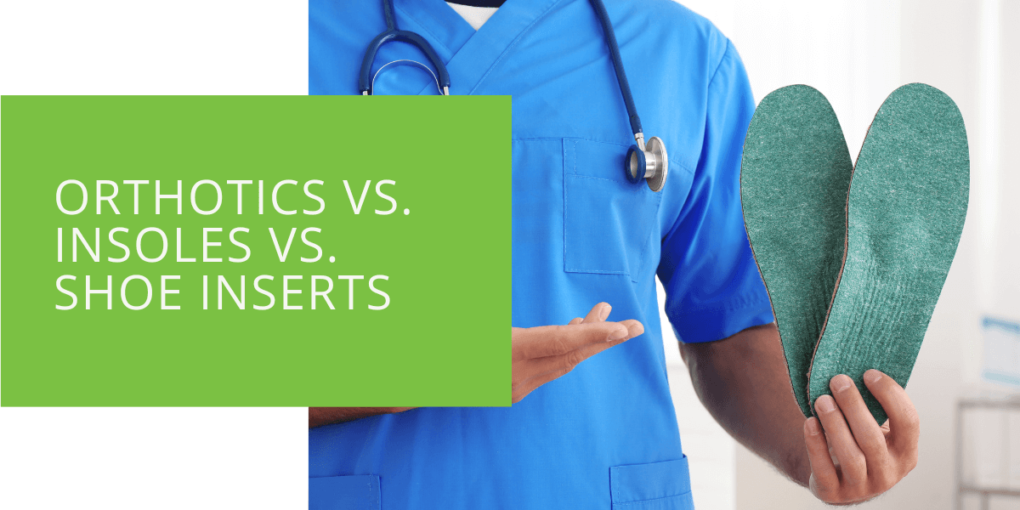Orthotics vs. Insoles vs. Shoe Inserts – What’s the Difference?
Foot health plays a crucial role in our overall well-being, and when it comes to addressing foot problems, terms like orthotics, insoles, and shoe inserts often arise. However, the confusion surrounding these terms can make it challenging to understand their differences and choose the right option for your needs. This article will delve into the distinctions between orthotics, insoles, and shoe inserts, providing the necessary information to make informed decisions about your foot health.
Understanding Orthotics
Definition and Purpose of Orthotics
Orthotics refer to custom-made devices prescribed by podiatrists to address specific foot conditions. These orthopedic appliances are meticulously crafted based on an individual's unique foot structure and biomechanics. The primary purpose of orthotics is to correct biomechanical abnormalities, provide support, and alleviate foot pain.
Types of Orthotics
Orthotics come in various types to cater to different foot issues. Rigid orthotics are designed to control foot motion and are commonly used to treat conditions such as plantar fasciitis and flat feet. Semi-rigid orthotics balance support and flexibility, suitable for individuals with moderate foot conditions. Accommodative orthotics, however, focus on cushioning and pressure redistribution for those with sensitive feet or diabetic foot complications.
Benefits of Orthotics
Custom orthotics offer numerous benefits. They can help relieve foot pain, improve gait and balance, correct posture, and enhance overall foot function. By providing the necessary support and alignment, orthotics reduce strain on the feet and lower limbs, making daily activities more comfortable and efficient.
Unveiling Insoles
Definition and Purpose of Insoles
Insoles, unlike orthotics, are pre-made inserts that can be purchased over the counter and placed inside shoes. These off-the-shelf inserts primarily provide additional cushioning and support for the feet.
Types of Insoles
Various types of insoles are available to address different foot conditions and preferences. Arch support insoles are designed to provide extra support to the natural arches of the feet, making them suitable for individuals with flat feet or fallen arches. Cushioned insoles offer enhanced shock absorption, reducing the impact on the feet during walking or running. Gel inserts, with their soft and cushioning properties, are ideal for individuals seeking additional comfort and pressure relief.
Benefits of Insoles
Insoles offer several benefits, especially in terms of comfort and support. They provide extra cushioning, reducing the pressure on sensitive feet areas. Insoles also help with shock absorption, protecting the feet and lower limbs from excessive impact during activities. However, it's important to note that insoles have limitations compared to custom orthotics since they are not specifically tailored to address individual foot conditions.

Decoding Shoe Inserts
Definition and Purpose of Shoe Inserts
Shoe inserts, sometimes used interchangeably with insoles, are generic inserts that can be placed inside footwear. They are designed to enhance the shoe's comfort, fit, and support.
Types of Shoe Inserts
Shoe inserts come in different forms to cater to specific foot needs. As the name suggests, heel cups provide additional cushioning and support to the heel area, aiding in shock absorption and reducing heel pain. Metatarsal pads are inserts that offer targeted support to the ball of the foot, relieving pressure and alleviating discomfort. Arch supports are inserts that provide extra support to the arches, helping to stabilize and balance the feet.
Benefits of Shoe Inserts
Shoe inserts offer several benefits to individuals seeking improved comfort and fit. They enhance stability within the shoe, reducing the risk of slippage and providing a more secure feeling while walking or engaging in physical activities. Shoe inserts also help reduce friction between the foot and the shoe, preventing blisters and hot spots. Additionally, inserts with arch support can aid in maintaining proper foot alignment and reducing strain on the arches, making them beneficial for individuals with arch-related issues.

Choosing the Right Option for You
When selecting the most suitable option for your foot health, it's essential to consider your specific needs and consult a podiatrist for professional guidance. While insoles and shoe inserts can provide temporary relief and enhance comfort, they are not customized to address individual foot conditions comprehensively. On the other hand, custom orthotics are meticulously crafted based on a thorough evaluation of your foot structure and biomechanics.
A podiatrist will assess your feet, analyze your gait, and consider any existing foot problems. They will then design custom orthotics that cater to your unique foot needs. These custom-made orthotics offer the highest level of support, alignment, and comfort, as they are tailored to your foot structure and address any underlying issues contributing to your foot pain or discomfort.
Conclusion
Orthotics, insoles, and shoe inserts each serve a distinct purpose in foot care. Orthotics are custom-made devices prescribed by podiatrists to correct biomechanical abnormalities and provide comprehensive foot support. Insoles are pre-made inserts that offer additional cushioning and support, while shoe inserts are generic inserts that enhance comfort and fit within footwear. While insoles and shoe inserts can provide temporary relief, they cannot match the precision and effectiveness of custom orthotics.
To ensure optimal foot health and address specific foot conditions such as flat feet, plantar fasciitis, or other foot problems, it is recommended to consult a podiatrist who can evaluate your feet and provide personalized recommendations. Investing in custom orthotics can significantly improve your foot function, reduce pain, and enhance your overall quality of life.
Remember, when it comes to your feet, prioritize professional evaluation and seek the guidance of a qualified podiatrist to ensure you receive the most appropriate and effective solution for your foot health needs.
Key Takeaways
- Orthotics are custom-made devices prescribed by podiatrists to correct biomechanical abnormalities, provide support, and alleviate foot pain.
- Insoles are pre-made inserts that offer additional cushioning and support, while shoe inserts are generic inserts that enhance comfort and fit within footwear.
- Custom orthotics provide the highest level of support and are tailored to an individual's foot structure and specific foot conditions, offering comprehensive foot care.

